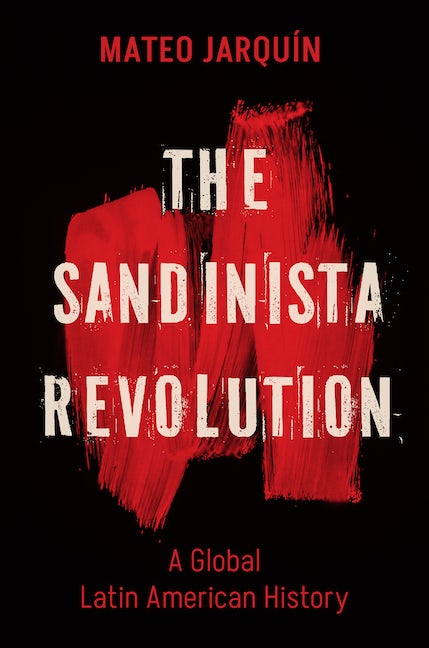
Faculty Book: The Sandinista Revolution, A Global Latin American History
March 21, 2024
 Wilkinson College of Arts, Humanities, and Social Sciences congratulates Dr. Mateo Jarquín (History) on his first published book, The Sandinista Revolution, A Global Latin American History (The University of North Carolina Press).
Wilkinson College of Arts, Humanities, and Social Sciences congratulates Dr. Mateo Jarquín (History) on his first published book, The Sandinista Revolution, A Global Latin American History (The University of North Carolina Press).
“In my discipline (History), monographs are the name of the game; books are the main way that students and scholars consume research. So, I’m excited that many more people than ever before are about to engage with my work.”
Nicaragua’s Sandinista Revolution was a major issue in U.S. foreign policy, a “hot spot,” as Dr. Jarquín states, in the global Cold War. His book demonstrates a watershed moment in Latin American politics.
The Voice of Wilkinson sat down with Dr. Jarquín to discuss his book.
Voice of Wilkinson: Tell me a little about the book
Dr. Mateo Jarquín: In a nutshell: My book tells the story of the rise and fall of Nicaragua’s Sandinista Revolution from 1979 to 1990 and what it means for Latin American politics in the twilight years of the Cold War era.
For Nicaraguans this was an epic saga. Only a generation ago, it raised colossal hopes for social change in one of the poorest countries in the hemisphere. These expectations were dashed just as quickly and, in the process, Nicaraguans fought a bitter civil war.
VoW: Why did you feel this was an important topic to cover?
MJ: All Nicaraguans live in the shadow of those upheavals and are aware that their legacies matter greatly for us today. However, they’re not something we have confronted in a studied, systematic manner. To build a better future we need to reckon with what is an extraordinarily messy, complicated recent past. At one level, my research and this book, in particular, are a modest contribution toward that end.
VoW: While researching your book, was there something you learned that you can share with us?
MJ: One thing that surprised me is the scarcity of data concerning some of the most basic, important facts that are relevant to the story. For example: How many people died before Sandinista-led rebels were able to topple the U.S.-backed Somoza dictatorship in 1979? How many war-related casualties took place in the subsequent fighting between the Sandinista government and the Contra? People often cite various figures. But the fact is that we only have estimates, and these vary wildly. A lot, of course, depends on how many people you think were killed and who you believe was responsible. Obviously, historians seek to illuminate the past. But sometimes we contribute by pointing out what we don’t know about the past.
VoW: What do you hope readers will gain from your book?
MJ: Most readers will be familiar with the Sandinista Revolution because, in the context of the Cold War, Nicaragua became a target for U.S. intervention under the Reagan administration. Plenty of political controversies stemmed from this; you may, for instance, remember Oliver North and the Iran-Contra scandal. But not everything revolved around decisions made in Washington. Viewing the politics of the rest of the world only from that vantage point can be counterproductive. The rise and fall of the Sandinista Revolution was primarily a Nicaraguan story that deserves to be told on Nicaraguan terms. Moreover, it was a global phenomenon that resonated not only in Washington but also in Western Europe, the socialist bloc, and especially across Latin America. After all, it was arguably the last major left-wing revolution of the 20th century.

